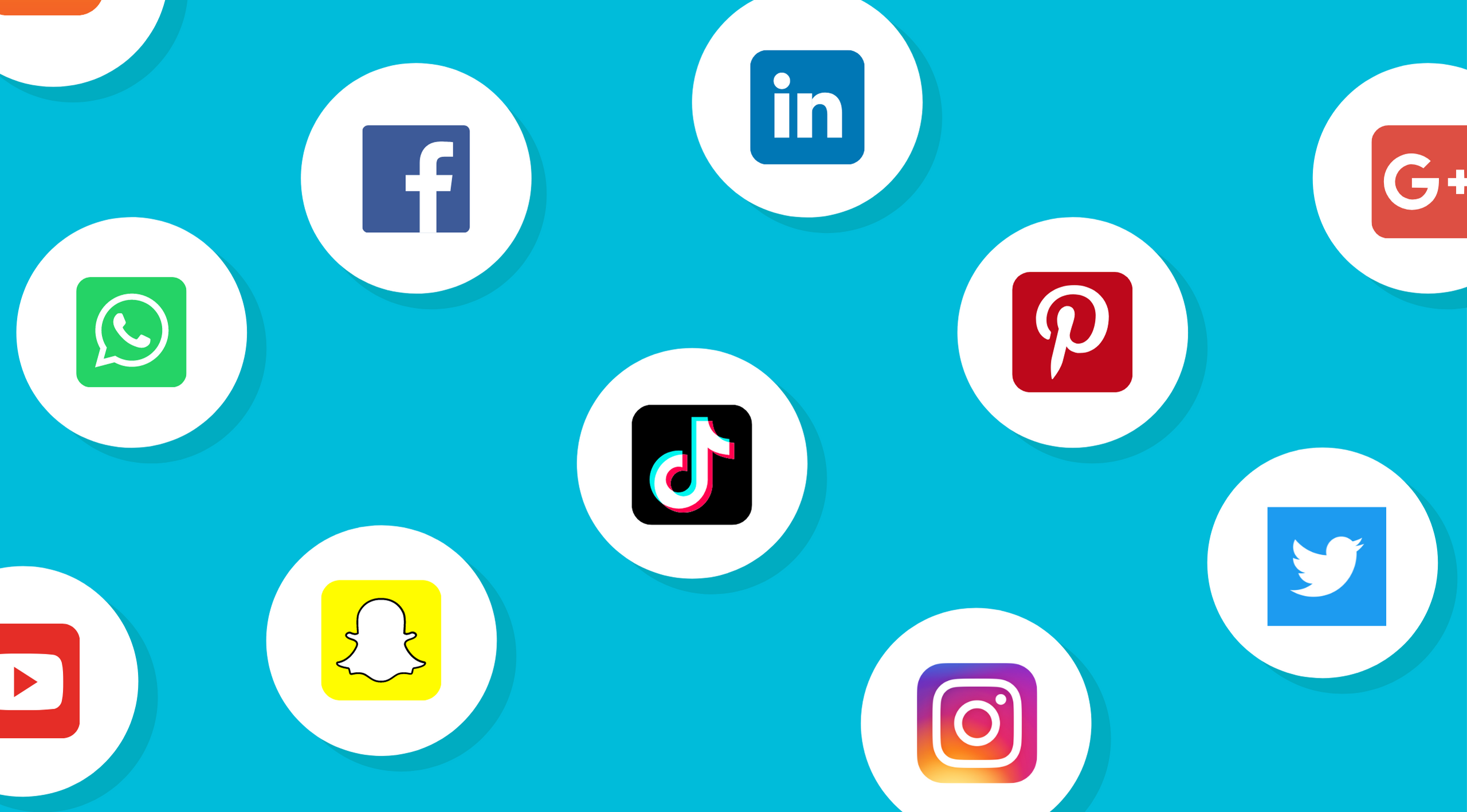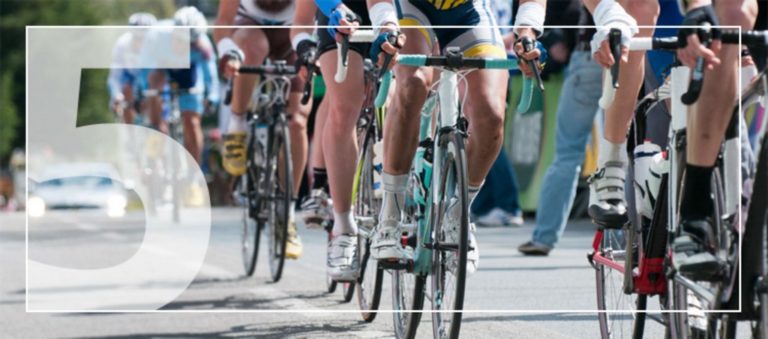Any brand that wants to raise awareness today cannot afford to ignore social media. In 2021, roughly 48 percent of the world’s population relies on social media every day. On average, people spend 2.5 hours on social media daily. If you aren’t promoting your event with organic social media content, you are missing an immense opportunity.
Organic social media management refers to promoting your brand or event with unpaid social media posts and engagement. The exposure or conversions you generate with such posts are organic because you didn’t pay the social media platform to promote them.
Due to algorithm updates, organic social media marketing has become highly competitive in the last few years. The average organic reach of a Facebook post is about 5.5 percent of your follower count, for example. Although it is not easy to utilize organic marketing, one can get the hang of it pretty quickly. Both small and large brands highly benefit from their social media efforts. The competition is fierce, but a strong strategy on genuine engagement and connections with your audience can help you stand out.
This guide provides 10 steps for developing an organic social media management strategy for event managers. We discuss everything from best practices for understanding audiences and choosing adequate channels to tools for analyzing performance.
1. Understand Your Audience
If you want organic social media to work, it must directly address your target audience. As an event promoter, you should already have an understanding of your target demographic, but if not, try to pinpoint the following characteristics:
- Age group
- Gender
- Occupation
- Income
- Education
- Geographic location
- Hobbies
- Industry knowledge
One way to know who your event attendees are is to look at insights from past events. If you don’t collect this data, then look to your competition. Scope out the event websites of your competitors — as well as their social channels — and pick up on their tone and the type of content they post. Who do they seem to be speaking to in their posts? Other options for identifying your audience include asking event management industry colleagues for their opinion and experience and sending a survey to your email list.
Once you develop an understanding of your audience, create a few persona profiles. Use these profiles to guide your organic social content strategy by creating content that speaks directly to them.
2. Identify the Proper Channels
To reach your audience effectively with organic media, you need to post on the right social channels. How do you know which ones to choose? Take a look at the persona you created and compare that to typical users for each major platform.
- Most used social media platform
- 25-34 year-olds are the largest age group
- Users are 44% female and 56% male
- Because it’s the largest platform with the most users, you should have at least some presence on Facebook.
- 1 billion monthly active users
- 25-34 year-olds are the largest age group
- Users are 57% female and 43% male
- Instagram is the platform to go to if you want to work with influencers.
- 187 million daily active users
- 30-49 year-olds are the largest age group
- Users are 32% female and 68% male
- Use Twitter to share breaking news that drives discussion or provide customer service.
- 738 million total users
- 46-55 year-olds are the largest age group
- Users are 49% female and 51% male
- LinkedIn is the best platform for B2B content, and with 70% of its users outside the US, the place to grow an international audience.
TikTok
- 100 million monthly active users
- 18-24 year-olds are the largest age group
- Users are 59% female and 41% male
- Use TikTok to reach a younger audience or work with influencers.
YouTube
- 2 billion active monthly users
- 15-25 year-olds are the largest age group
- 72% of all female internet users and 72% of all male internet users
- As a major video hosting platform, YouTube is an ideal social network for the event industry.
Use the above statistics to determine where your audience is most likely to be spending time, and target those channels with your organic posts.
3. Determine Your Goals
Before you start posting content at random, articulate your goals. What are you hoping to accomplish with an organic social media campaign? Some common goals for event planners are:
- Boosting audience engagement
- Gaining new followers
- Driving more event awareness
- Generating leads for event registration
- Spreading overall brand exposure
To make realistic goals for better organic media engagement, take stock of your current social media presence. Do a social media audit and note all your existing accounts across channels in one spreadsheet. Once you recognize where you stand, look at the information you’ve collected and see what’s going well and what needs improvement. Then, you can finally start setting goals.
Use the SMART goal-setting framework to formulate goals that are specific, measurable, attainable, relevant, and timely. If you want to boost audience engagement, for example, decide what that means. Do you want more comments and likes on your post, and if so, how many? Be as specific and realistic as you can.
4. Plan Your Content
After goal-setting comes content planning. Creating a content plan can feel overwhelming, but it helps to relate it to the event lifecycle: pre-event, during-event, and post-event. When you break your content into these three chunks, you can stay organized.
What kind of content does well for event promoters on social media? Use some of the following examples in your strategy:
- High-quality images from previous events
- Posts about event swag
- Countdown-to-the-event posts
- Posts with event teasers and discount deals
- Swag giveaways
- Hashtag photo contests
- Q&A videos with the event organizer
- Behind-the-scenes event planning videos
- Testimonials
- Sponsor shoutouts
- Featured attendee stories
Create a bank of content that you can pull from, so you can post daily without scrambling to create good content at the last minute. Also, by creating all of your posts at once, you can more easily ensure a consistent brand tone and style.
When posting your content, consider how you’ll optimize it to get the most traction on each platform. Here are a few steps to help you out:
Optimize Instagram content by posting carousels, creating consistent posts (1.56 times per day, according to Hootsuite), adding thoughtful and relevant hashtags, and posting when your audience is online.
On Facebook, the best strategies for optimization are always responding to comments, going for emotional reactions rather than just “likes,” facilitating conversation between your audience members, posting Stories, staying on top of your Facebook Business Page, and going live.
TikTok
To make the most of the TikTok algorithm, use a TikTok Business account, tap into your community or subculture, put the hook for your video in the first few seconds, write an engaging caption, create videos specifically for TikTok, and engage with other users.
Optimize your LinkedIn posts by choosing the best time to post, creating industry-relevant posts, using LinkedIn Publisher, and putting hashtags significant for your industry.
5. Create an Event Hashtag
Every event should have a branded hashtag so attendees can post about it on their social media feeds. Develop your hashtag before the event and use it whenever you post, so your followers and subscribers become familiar with it. You can also create separate pre-event and during-event hashtags, using the former to draw excitement and reserving the latter for the event itself.
Good hashtags are especially significant on Instagram, but you should sprinkle your branded hashtags across all channels for consistency. Even if your post has no other hashtags, include the event hashtag.
6. Develop a Social Media Calendar
You created a bank of content for your content plan, but it won’t help you if you don’t put it on a calendar. Decide when and what to post and share it with your team members so everyone stays on the same page on the organic social media strategy.
Finding the right time and frequency to post varies by channel. A general rule, though, is to post at least 3-5 times per week. This frequency is typically enough to engage your followers and optimize content for platforms’ algorithms. Ideally, you should post one time each day to maximize your reach and keep your posts in your audience’s feeds. Remember, most people are on social media every day, so daily posts have a better chance of reaching them.
7. Schedule Your Posts in Advance
If you take the time to devise a content plan and calendar, you might consider using a scheduling tool. A social media scheduling tool like Hootsuite, Buffer, or Later lets you create posts across your social channels in advance, so you can be sure they get posted at the right time for your audience. You also don’t have to remember to make the post yourself.
Tools to help you schedule and manage social media come in all shapes and sizes, with some free and others paid. Some tools worth checking out include:
- Hootsuite
- Monday.com
- ContentCal
- Loomly
- AgoraPulse
- PromoRepublic
- Socialoomph
- Meet Edgar
- Buffer
- Sprout Social
- Later
- CoSchedule
- Tweetdeck
8. Engage With Followers
Organic posts aren’t effective if you don’t follow up on audience engagement. Entice users to leave a comment by asking a direct question or using a “comment below if this applies to you” formula. You can also ask people to leave their advice and tips in the comments. Encourage commenting as much as possible because it inspires conversation and boosts engagement.
If a user takes the time to comment on your post, make sure to reply or like their comment. Add comments and likes to others’ posts to start conversations as well. When followers send you a DM, always try to reply promptly. Your organic social media management strategy centers on community-building, and these engagement techniques will help bring you closer to your audience.
9. Measure and Improve
Gauge how well your organic social posts are doing by tracking basic metrics. Gain insights into which types of posts are the most successful, the best time of day to post for the most engagement with your community, and how frequently you should post to get the most impressions.
Track social media analytics based on your specific goals. If you want to improve event awareness, look at your reach and impressions. How well do you stand in engagement rates, likes, comments, and DMs? Your metrics will help you make informed decisions about your organic social strategy based on data.
10. Consider Paid Ads
One shouldn’t rule out paid ads even when using organic social media management. As previously mentioned, organic social reach is difficult to get. If you want to establish a presence on social media, you will have to supplement your organic posts with paid advertising. Most platforms allow sponsored posts, especially Facebook, Instagram, and Pinterest.
Paid ads put your content in front of more users, improving discoverability and ultimately attracting a larger audience. You could even consider taking one of your most popular organic posts and promoting it for further reach.
Events.com can help you with our Promote tools. Take the guesswork out of paid digital marketing for your events with our branded pages, social media integrations, and promo codes. If you want to add more fuel to your social media and digital marketing efforts to ensure they pay off, consider budgeting for paid ads by using Events.com.
Making Organic Social Media Management Work for Your Event
Organic social media management should factor into your overall event marketing strategy — before, during, and after the event. Use social media to connect with event attendees or let them connect to each other. Build a community by sharing updates, news, features, and interviews from your event. Curating user-generated content is also a great way to foster connections with your target audience.
Although you probably need both organic and paid social media strategies to establish a solid presence and truly boost your event brand, don’t neglect your organic posts. Your organic social media strategy is your chance to show how much you care about your audience.
Events.com is also here to help you plan, promote, and run your event. Request a demo today to get started.







